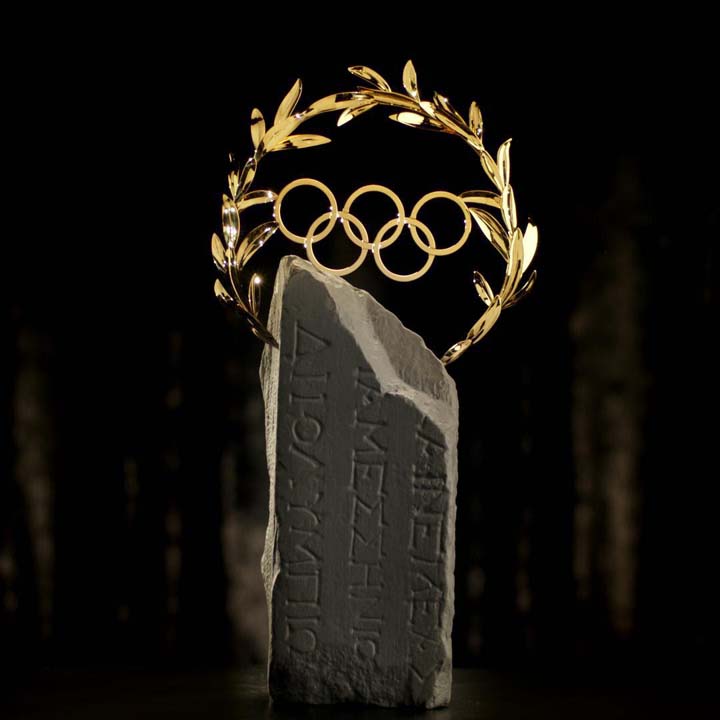

The 2020 Tokyo Olympic Laurel has been awarded to the Nobel laureate Professor Muhammad Yunus for his extensive work in sports for development. It was presented to him at the opening ceremony of the Tokyo Olympics on July 23, 2021. The Laurel Trophy presented with this honor contains some of the most invaluable relics of the several thousand-year histories of the Olympics.
The most valuable part of the Laurel Trophy in terms of historical and archeological importance is its stone base. It is actually a replica of two ash-blue marble carvings discovered in archeological excavations in 1878 and 1860 at Ancient Olympia, Greece. To understand why it is valuable, we must go back in time. It should be remembered that it is around the Panhellenic religious sanctuary at Ancient Olympia that the Greek Olympic Games were held every four years from the eighth century BC to the fourth century AD. It has been re-launched as the World Olympic Games since 1894. The stone that forms the base of the Laurel Trophy has some words engraved on it in ancient Greek script. From there, experts speculate that the stone was formerly part of the foundation stone of a bronze sculpture, dedicated to the temple of the Greek god Zeus. The script mentions some singers and actors here who have found favor with a great man from a place called Messina. The inscription suggests that it was engraved in the second century BC. In other words, this stone in the Laurel Trophy directly bears the memory of the Olympic Games 2200 years ago in Ancient Olympia. With the kind permission of the President of Greece and the Ministry of Culture, the replica of the country’s valuable archeological treasure could be used by the International Olympic Committee for the Laurel. Thus this Laurel honor has been associated with the ideals of the ancient Olympic Games.
The upper part of the Laurel Trophy has a laurel leaf crown and Olympic symbol rings – both made of gold. More history of the ancient Greeks and Romans is associated with this laurel leaf crown. In fact, this crown originated from ancient Greek mythology. The Greek name of the laurel plant is Daphne, which is also the name of a Greek goddess. Mount Olympus, the holiest site in Greece, was home to the top 12 Greek deities. One day, a most prominent one of them the very handsome Apollo, was found in a sad mood by the goddess Daphne. She then crowned him with a crown she made out of her own leaves, the laurel leaves, in an attempt to please him. In memory of this, later it became customary in Greece to adorn the winner with a laurel leaf crown in various competitions, such as poetry or knowledge competitions, even in the Olympic Games. In Roman times, war heroes such as Julius Caesar were greeted with laurel leaf crowns. In that tradition, success is still recognized with the crown of laurel leaves (wild olive leaves)
The Olympic Laurel Trophy has been beautifully designed by world-renowned designer Chopard from Switzerland. The gold used for its laurel crown and Olympic symbol rings has also a story to tell. An organization called The Alliance for Responsible Mining has organized small-scale gold mines in Colombia and Peru that produce gold only for artistic purposes, and have succeeded in making it sustainable for the social welfare of its workers and local people. The use of this gold in the Laurel Trophy is also a triumph of this humanitarian mining policy.

